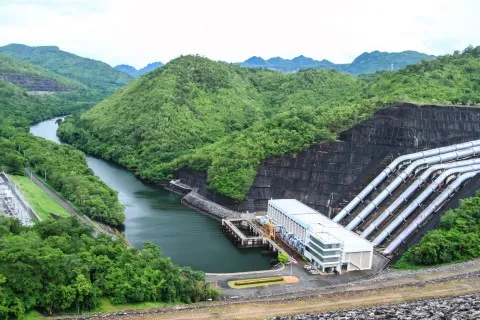
China's hydropower usage dropped to just 276 hours in May
It's 11% the below seven-year average.
China's National Energy Administration (NEA) has reported national power utilization figures for May, which revealed utilization of only 276 hours for hydro power plants in the month.
According to a research note from Barclays, this is 11% below the seven-year average of 310 hours in May and only slightly higher than the 270 hours achieved in 2011, when China experienced a 'once in 60 year drought'.
Despite weak hydro power utilization, thermal power did not gain substantially (up only 1% y/y in May) as demand for power remained weak.
Here's more from Barclays:
June to October are the peak hydro power months in China and, combined with boosted hydro power capacity from key project completions, we expect further weakness in thermal power generation in the next few months.
This is despite the Three Gorges Dam limiting its water flow in early June to aid rescue efforts for the Yangtze River cruise accident in Hubei province, which could dampen hydro utilization for the month slightly.
Thermal: Thermal power generation was only 1% higher y/y in May on the back of 7% capacity growth across the country, and a 9% drop in utilization hours.
The 1,813 hours of utilization recorded in May was the lowest since 2009 when the economy was affected by the global financial crisis. Negative power demand growth from secondary industries such as steel, cement and glass production were the main contributors to slower power demand growth.
Renewables: On 16 June, the NEA requested northern and northeast province grid companies to study the feasibility of supplying heat using wind power during the winter months.
Heat supply is the key driver to run thermal co-gen power plants during the winter, hence replacing that with wind power aims to increase utilization of wind power and reduce air pollution.
Nuclear: CGN's Yangjiang unit 5 reached a construction milestone on 12 June when the dome of the containment building was installed. Unit 5 is scheduled to be completed by 2019, running a CGN-developed ACPR-1000 reactor.








![Cross Domain [Manu + SBR + ABF + ABR + FMCG + HBR + ]](https://cmg-qa.s3.ap-southeast-1.amazonaws.com/s3fs-public/styles/exclusive_featured_article/public/2025-01/earth-3537401_1920_4.jpg.webp?itok=WaRpTJwE)
![Cross Domain [SBR + ABR]](https://cmg-qa.s3.ap-southeast-1.amazonaws.com/s3fs-public/styles/exclusive_featured_article/public/2025-01/pexels-jahoo-867092-2_1.jpg.webp?itok=o7MUL1oO)









 Advertise
Advertise


